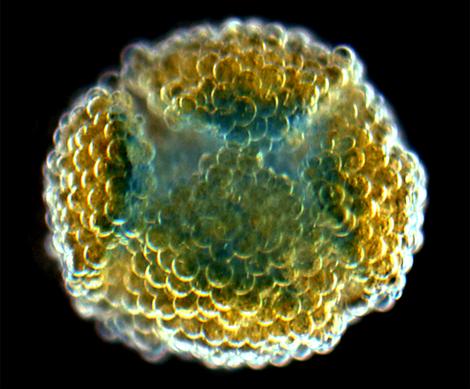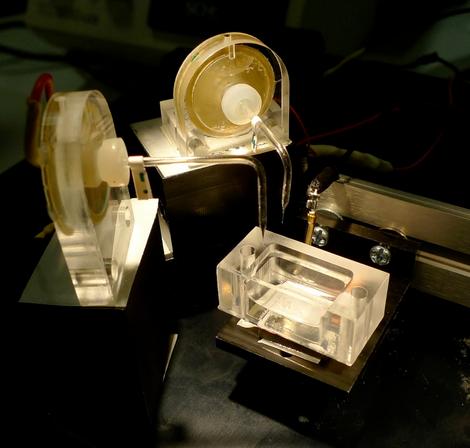Oxford Researchers 3D Print Synthetic Human Tissue

Synthetic human tissue built from thousands of water droplets. Courtesy of Oxford University/G Villar.
Latest News
April 5, 2013
While 3D printing is making enormous strides in the realm of manufacturing, some of the most interesting developments in additive manufacturing (AM) have come from the medical field. AM has been used to help disabled children, grow ears, aid in surgery, and much, much more. The future of healthcare and the future of AM seem to go hand in hand.
Now, researchers at the University of Oxford have used 3D printing to create synthetic human tissue. The new tissue material is formed from thousands of tiny water droplets encapsulated in lipid films. This medical milestone could lead to advances in drug delivery methods, using the network to target specific areas, and, with further development, could one day replace, or at least interact with, damaged human tissue.
“We aren’t trying to make materials that faithfully resemble tissues but rather structures that can carry out the functions of tissues,” said Professor Hagan Bayley of Oxford University’s Department of Chemistry, who led the research. “We’ve shown that it is possible to create networks of tens of thousands connected droplets. The droplets can be printed with protein pores to form pathways through the network that mimic nerves and are able to transmit electrical signals from one side of a network to the other.”
Each droplet in a network measures around 50 microns in diameter, with the largest network formed thus far containing 35,000 droplets. Of course, the researchers couldn’t very well just buy a commercial system to produce the material, so they developed their own. The synthetic tissue can also be programmed 4D style to fold itself into different shapes after printing is completed, simulating muscle movement.
Oxford researchers also said that since the new material is synthetic in nature, it contains no genome and will not replicate, unlike other cell research, such as stem cells, which should lead to fewer problems in application. The team reported their findings in a paper titled “A Tissue-Like Printed Material” in Science.
Below you’ll find a clip of the manufactured tissue folding itself.
Subscribe to our FREE magazine, FREE email newsletters or both!
Latest News
About the Author
John NewmanJohn Newman is a Digital Engineering contributor who focuses on 3D printing. Contact him via [email protected] and read his posts on Rapid Ready Technology.
Follow DE







